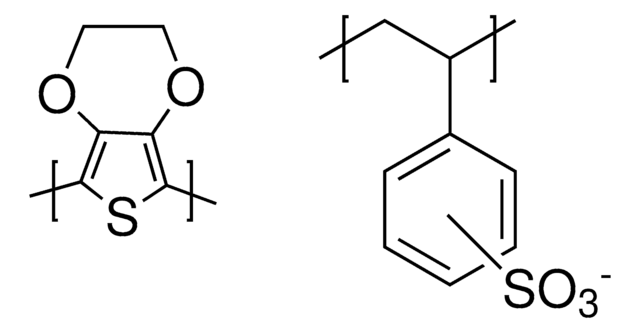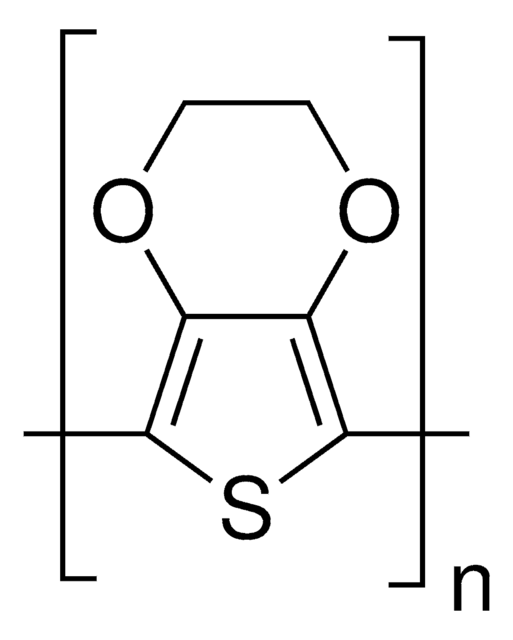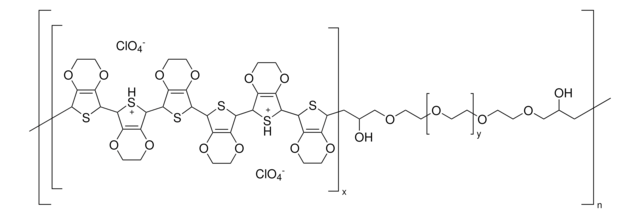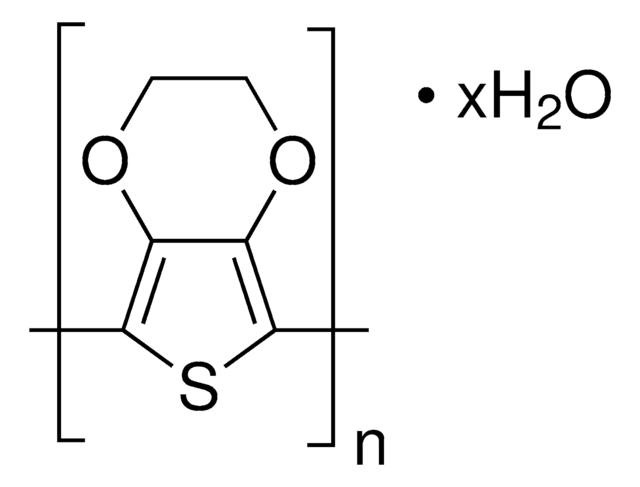768650
Poly(3,4-ethylenedioxythiophene)-poly(styrenesulfonate)
5.0 wt. %, conductive screen printable ink
Sinónimos:
Orgacon™ EL-P-5015, PEDOT:PSS, Poly(2,3-dihydrothieno-1,4-dioxin)-poly(styrenesulfonate)
About This Item
Productos recomendados
Formulario
paste
características de los productos alternativos más sostenibles
Design for Energy Efficiency
Learn more about the Principles of Green Chemistry.
sustainability
Greener Alternative Product
concentración
5.0 wt. %
resistencia
≤130 Ω/sq
pH
1.5-2.0
viscosidad
≥50,000 mPa.s(20 °C)
categoría alternativa más sostenible
temp. de almacenamiento
20-25°C
¿Está buscando productos similares? Visita Guía de comparación de productos
Descripción general
- low band gap
- good optical properties
- high conductivity
- low redox potential
- easy processing
- tunable film forming ability
Aplicación
Curing temp. 130°C during 3 min
Información legal
Palabra de señalización
Danger
Frases de peligro
Consejos de prudencia
Clasificaciones de peligro
Eye Dam. 1 - Skin Irrit. 2
Código de clase de almacenamiento
10 - Combustible liquids
Clase de riesgo para el agua (WGK)
WGK 3
Punto de inflamabilidad (°F)
208.0 °F
Punto de inflamabilidad (°C)
97.77 °C
Elija entre una de las versiones más recientes:
¿Ya tiene este producto?
Encuentre la documentación para los productos que ha comprado recientemente en la Biblioteca de documentos.
Los clientes también vieron
Artículos
A detailed article on conducting polymer materials for flexible organic photovoltaics (OPVs) applications.
Find advantages of inorganic interface layer inks for organic electronic & other applications.
The emerging field of printed electronics requires a suite of functional materials for applications including flexible and large-area displays, radio frequency identification tags, portable energy harvesting and storage, biomedical and environmental sensor arrays,5,6 and logic circuits.
Progress in Organic Thermoelectric Materials & Devices including high ZT values of >0.2 at room temperature by p-type (PEDOT:PSS) & n-type (Poly[Kx(Ni-ett)]) materials are discussed.
Nuestro equipo de científicos tiene experiencia en todas las áreas de investigación: Ciencias de la vida, Ciencia de los materiales, Síntesis química, Cromatografía, Analítica y muchas otras.
Póngase en contacto con el Servicio técnico







